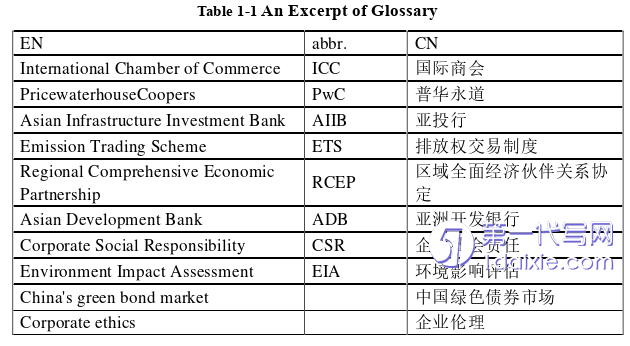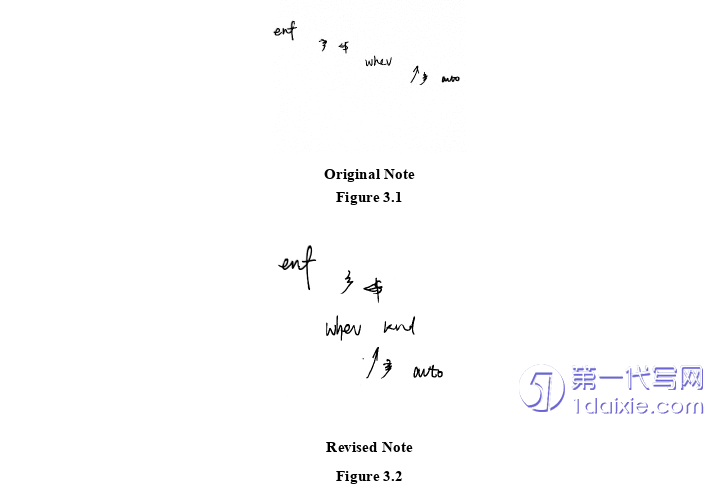本文是一篇英语论文,笔者认为本次口译出现的问题集中体现在交传精力分配模型中的理解阶段,由于发言人的重口音和笔记的失衡导致精力超出负荷,分配出现问题。
Chapter One Task Description
1.1 Characteristics of Task
Regarding topic types, the interview centers around the key subjects discussed at the APEC CEO Summit. The primary focus of the discussion is on achieving high-quality, environmentally sustainable development within the global economy. The theme is evident and the conversation flows naturally, with the hostess guiding the dialogue from China's leadership role in this area to the ongoing efforts of other countries in the region. The content of the interview was structured, with interviewees delivering extemporaneous speeches that were logical in both scope and direction.
As an interview in the realm of economics, the conversation contains specialized terminology that requires a deep understanding by the interpreter. Without this knowledge, comprehending the original language may prove challenging. Moreover, a fundamental grasp of national macroeconomic principles and governmental policies is essential to making sense of the speaker's arguments.
Interpreting assignments must be delivered promptly. In this task, consecutive interpreting is preferred. Although the pressure is lower than that of simultaneous interpretating, translators must work quickly due to the interview format, where reporters ask questions and guests provide answers with limited time for analysis. Therefore, ensuring timely and accurate interpreting is crucial.
1.2 Introduction of Speakers

The discussion was conducted by four distinguished individuals.
Raymund Chao, Chairman of PwC Asia Pacific and China, is an accounting advisory specialist for the Ministry of Finance. He speaks in a concise manner with a subtle Chinese accent. John Denton, the Secretary General of the International Chamber of Commerce (ICC) from Australia, speaks in a soft, but resolute, voice. Kattiya, the CEO of Kasikornbank in Thailand, is both the first female CEO of Kbank and a prominent business leader in the region. She speaks in a strong Tai accent. Paul Gilding, a fellow of the University of Cambridge Institute for Sustainable Leadership, is an active advocate for sustainable development.
Chapter Two Interpreting Process
2.1 Pre-interpreting
According to Seleskovitch (1992: 132), quality interpreting cannot be achieved without adequate preparation. Gile (2009: 179) posits that successful interpreting hinges on two conditions: firstly, the total processing demand of each task must not exceed the interpreter's processing capacity; and secondly, the processing demand of each individual task at any given time must not exceed the interpreter's capacity. Besides, a lack of adequate preparation by interpreters may amplify the effort of listening and analysis, thus compromising the allocation of note-taking, memory, and coordination, which may result in a decline in quality. To perform well as an interpreter, it is crucial to thoroughly analyze and purposefully prepare for the task at hand. In addition, the author chose capacitive pens and tablets to take notes, which can improve the filing efficiency and facilitate post-interpretating assessment and analysis. (Chen Jing, Wang Sisi, 2022)
2.1.1 Parallel Text Preparation
The experiment conducted by Gu Qiyi and Jin Xiafei (2021: 80) demonstrates a negative correlation between the interpreter's cognitive load and their familiarity with the subject matter. As a result, it is imperative to adequately prepare for the topic at hand. The interpreting simulation task pertains to an interview that takes place during the APEC CEO Summit with a theme centered on “high quality, green and sustainable development”. As such, the pertinent “background knowledge” should encompass all aspects of the subject area, including comprehensive knowledge, and general knowledge. It can range from temporary, non-professional level industry knowledge to knowledge related to the specific content of the speech.
2.2 While-interpreting
The interpreting task consisted of two sessions, amounting to a total of two hours. The audience was composed of three MTI interpreters and one individual with a BA in Economics. The field presents some challenges; in particular, problems with efforts due to prolonged working hours and noise interference during recording.
Distraction and fatigue are common issues when interpreting for extended periods. To address this, the author ensured adequate rest and sleep, maintained a healthy diet, and practiced simple relaxation and concentration exercises, such as deep breathing and eye relaxation during breaks.
During the task, noise from the conference venue where the original audio was created difficulties in discerning and comprehending the speaker's message. To overcome this, the interpreter implemented various measures to ensure the accuracy of my interpreting output.
To account for the potential loss of information caused by noise interference, the interpreter relied heavily on context and prior knowledge. Drawing on my preparation and familiarity with the subject matter, he inferred contextual clues and used prior knowledge to accurately interpret the speaker's message. This enabled me to compensate for the limited auditory information available.
Chapter Three Problems and Solutions .............................. 11
3.1 Problems Encountered in the Interpreting ......................... 11
3.1.1 Strong Accents of Speaker .............................. 11
3.1.2 Imbalanced Note-taking of Interpreter ................ 12
Conclusion .................................. 26
Chapter Three Problems and Solutions
3.1 Problems Encountered in the Interpreting
This subsection applies Gile's effort model to analyze the challenges encountered during the interpretating process, particularly in the comprehension phase. Such challenges include difficulties with accents and unclear note taking frames.
3.1.1 Strong Accents of Speaker
The major challenge the author experienced while listening and analyzing was the speaker's diverse and pronounced accents. Out of the four speakers involved in this interpreting assignment, two were non-native English speakers from China and Thailand, while the remaining two were native Australians with distinct accents. The interpreters encountered difficulty in comprehending the interviewees' speech due to their respective accents. Upon reviewing the video recordings, it became evident that the interpreter had to exert more effort in analyzing Kattiya's speech, as her accent was particularly exotic, resulting in more struggle. Conversely, the interpreter felt more at ease when Raymund and Paul spoke. Accent is a crucial input variable in interpreting (Pöchhacker, 2016), and can often pose a significant practical challenge for interpreters when carrying out their tasks. To solve the problem, the solution adopted by the authors is inferencing within the context, paraphrasing, and replacing it with a more general segment.
Taking the Thai accent as an example, the author randomly intercepted five sentences of the Thai speaker's speech (consisting of more than five words) and conducted an analysis. The results indicate a high percentage of word stress placed on the final syllable, with an average of two instances in each sentence. Furthermore, it was observed that the speaker's pronunciation of the /r/ sound tended to take on the phonetic qualities of /l/. As an illustration, the word “very” is typically pronounced as /'ver.i/ in the Cambridge Dictionary (2023), whereas Thai speakers would pronounce it as /vel'i/.

Conclusion
This report provides a systematic overview of the simulated consecutive interpreting of the CGTN APEC Talks. The report details the interpretating process, from determining the content of the task to the preparation, interpreting, and post-interpreting assessment. During the course of the task, the author encountered several challenges, including accent, note-taking, and expression. To prepare for interpreting, the author suggests retrieving as much information as possible from various aspects and perspectives to make adequate preparations. Regarding the accent problem, the author recommends inferencing within context and intermission in note-taking to improve comprehension and accuracy. To address issues with note-taking, the author advocates for enhancing information selection and diversifying note formats. It is crucial for interpreters to focus not only on the content but also on efficient delivery. As such, the author suggests constant practice and dedication to achieving an accurate interpretating.
This simulation of an interpreting task is designed to be as close to reality as possible but is inevitably overly idealized. Many of the difficulties that would arise in a real interpreting task may be hard to encounter, and implementing the techniques learned can be challenging. As a student, the author must acknowledge that he will encounter challenges and make errors. The key is to study and train to correct any problems we encounter. Furthermore, language knowledge is critical, and we must continually work to improve our own quality to address the root of the problem.
reference(omitted)
